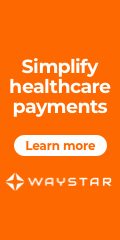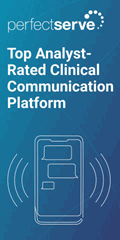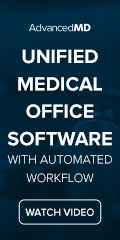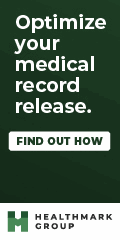Balancing HIPAA Compliance with Efficiency Across EHRs and Paper Records
By Stuart Pologe

While EHR systems continue to improve efficiency, paper documents are still a vital part of the healthcare information workflow. For many healthcare organizations, it’s a challenge to manage digital and paper materials while balancing the need for efficiency and compliance with HIPAA.
We were confronted with similar challenges at Night Nurse, a nationwide nurse triage company serving private practices, hospitals, universities, self-insured companies, and more. Our operational infrastructure had been a paper-only system since the company’s inception in 1999. As the business grew and demands increased, we realized the significant need for a hybrid paper-digital system. Built in-house, our IT system today merges 20,000 paper documents per month with disparate EHR and data sources while maintaining regulatory compliance.
If your organization has comparable needs and challenges, consider building a similar system. When executed properly, aim for your digital/paper management platform and strategy to:
- Expedite response times to improve patient outcomes.
- Improve information workflow.
- Maximize productivity.
- Reduce labor costs.
Since healthcare organizations are held to the highest standards of data security, your system will also need to ensure compliance with HIPAA and other regulatory directives. These requirements often create speed bumps, so you’ll find that balancing efficiency and compliance are the biggest challenges. Here are recommendations to equally accomplish both needs.
Optimize Your Workflow
Just a few extra minutes can mean the difference between a positive and negative patient outcome. To ensure that data entry and device speeds never stand in the way of patient outcomes, begin by examining your intake system for wasted steps.
How long does it take from the moment a patient arrives in your facility/on your phone until care is provided? Discover how many times information must be entered and transferred and eliminate steps, as possible. Also think about policies and devices that can more quickly register patients into the pipeline.
For intake/output of paper documents, high-speed printers, faxes and scanners shave valuable minutes that patients appreciate. With our call volume at greater than 90 to 100 requests per hour in rapid succession, the Brother MFC-8950DWT laser all-in-one has been key to our dispatch operation moving smoothly.
Ensure Secure Document Transmission
For many healthcare organizations, the most seamless HIPAA-compliant way to transmit information is still by fax technology. Although there are HIPAA-compliant ways to manage electronic transmission, it can become challenging and inefficient when you’re dealing with dozens of unique information sources and systems that involve paper and digital.
Many fax devices are built with advanced security features to address the increasing demand for secure document management. Secure fax documents through:
- Secure function lock – For restricting or granting access and privileges on a per-user or per-group basis.
- Active directory – For network user authentication and access to corporate email features.
- NFC card readers – For user-based walk-up authorization to release confidential fax/print jobs.
Move Information Seamlessly Between Paper/Digital Formats
Most healthcare organizations can handle paper documents and digital files smoothly; however, it’s the integration of the two mediums that often bring productivity to a screeching halt. At Night Nurse, we recognized this challenge early in the process. We solved it with a combination of procedures and technology solutions that help us ensure patient care to emergent situations in less than five minutes, made possible through rapid paper-to-digital transmission.
Printers and scanners provide a highly connected on-ramp/off-ramp between digital healthcare systems and physical paper documents. For some organizations, scanner connectivity with EHRs, cloud assets, and mobile apps assist in executing efficient and accurate data integration. And don’t overlook the value of seemingly simple conveniences, such as a fax machine’s ability to index and time-stamp paper documents for rapid, visual identification of critical information.
Always be Prepared
Reliability and 100-percent uptime are critical in providing a timely continuum of care. Fast-paced, regulation-laden healthcare environments leave no room for error, so you must have fail-safe procedures in place. This is one area where a digital/paper system shines. If one system experiences challenges, we’re able to move to the other without losing a beat.
Design your workflow procedures with capability to switch from hybrid to just paper or digital on a moment’s notice. To entirely avoid workflow interruptions, the magic word is redundancy. Follow these guidelines for glitch-free operations:
- Maintain always-on, business-class Internet connectivity. This is especially critical when utilizing cloud-based or SaaS systems. Our data center has numerous redundancies, including connectivity from four different Internet service providers, including full 4G ISP. Our primary business-class connectivity is provided by RCN, with the other services available at a moment’s notice. Operations are unaffected if one ISP goes down.
- Make sure your business is equipped with enough phone/fax lines for high-volume seasons and unexpected interruptions. Even in the digital world, phone-based communications still serve as a critical tie between healthcare providers and patients – particularly in emergent situations. Night Nurse maintains service from multiple telephone providers with service-level agreements. This supports more than 80 analog and VoIP phone lines with 4G switchover capabilities.
- Deliver consistent electric power. Interruptions in power – even for a few minutes – degrades patient care and introduces risks. Be prepared with alternate power sources to maintain service at all times. Our entire facility is also backed up by a dedicated natural gas generator. Also, every computer in our data center is individually equipped for short-term power interruptions with a battery backup system.
- Include staffing redundancies in your plan. Always have on-call healthcare providers ready to handle patients during unexpected peaks.
- Be ready with back-up technology solutions. Night Nurse has been very fortunate, with few breakdowns in more than 15 years. However, anything can break at any time, so alternate hardware systems must be powered-up and ready to go on a moment’s notice. For example, in addition to our reliable fax server, our Brother multifunction machines automatically activate and serve as standalone fax machines. If these two layers fail, an IntelliFax 4750e laser fax machine kicks in.
Also be prepared with these additional layers of redundancy:
- Run an alternate server at all times. This could be onsite or co-located elsewhere, but be ready for immediate switchover in case of failure.
- Stock extra supplies, such as high-capacity toner/ink, paper, office supplies, and other often-overlooked necessities.
- And always keep electronic archives of all documents in case paper is destroyed or vice versa.
Night Nurse’s reputation for rapid patient care is a tribute to our IT infrastructure. Through improved workflow, we’ve experienced significant gains in patient response times, expanded nationwide, and markedly increased profitability. Your organization can experience similar results; and earn the trust of patients, employees, and partners by implementing strategies and technologies to seamlessly meet the challenge of balancing paper records, digital document solutions, and regulatory requirements.
Stuart Pologe is COO of Night Nurse in Wayland, MA.
Contacts
Jennifer, Mr. H, Lorre, Dr. Jayne, Dr. Gregg, Lt. Dan
More news: HIStalk, HIStalk Connect.
Get HIStalk Practice updates.
Contact us online.
Become a sponsor.









































The article about Pediatric Associates in CA has a nugget with a potentially outsized impact: the implication that VFC vaccines…